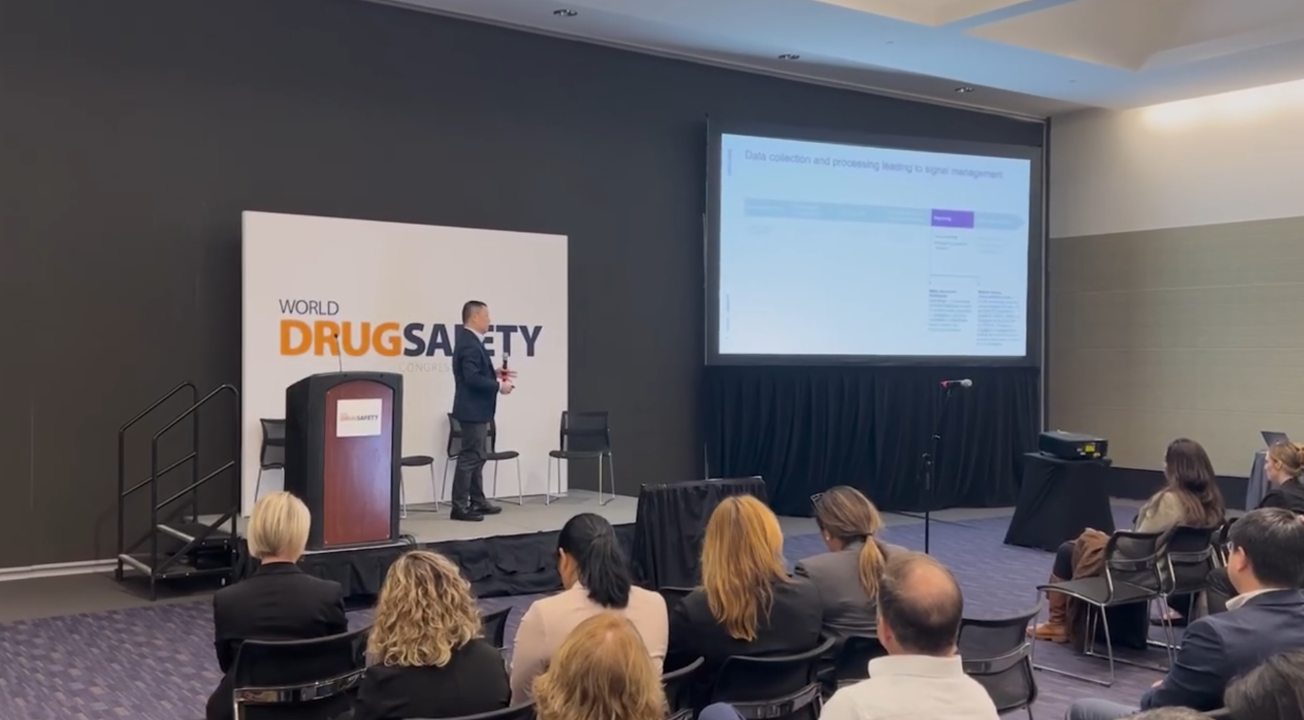Article
Insights from AMCP Nexus: Artificial intelligence workflow implementation in healthcare and its utilization in the formulary decision-making process
At AMCP Nexus 2024, Darlena Le presented her team’s research on healthcare decision-maker (HCDM) perspectives on artificial intelligence (AI) workflow implementation in healthcare and its utilization in the formulary decision-making process. The study confirmed that most HCDMs recognize AI's potential to enhance productivity and reduce costs, while concerns about privacy and reliability remain. A key finding was only a small percentage of HCDM organizations provide guidance on how to leverage AI tools. Future research can explore additional implementations of AI in in the formulary product evaluation workflow beyond supporting evidence aggregation.

5 questions with Darlena Le

At AMCP Nexus 2024, Cencora team members presented research posters on a variety of topics across the managed care space. We took the opportunity to chat with them about their work and its potential impact. Here, Darlena Le, PharmD, Health Outcomes and Market Access Research Fellow at Cencora answers questions about the poster, “Evaluation of healthcare decision-maker perspectives on artificial intelligence workflow implementation in healthcare and its utilization in the formulary decision-making process.” Joanna Ng, PharmD, Mike Nielsen; Caroline Berns, MBA. Melissa McCart, PharmD, MS, Cynthiya Ruban, PhD, MS, and Maher Abdel-Sattar, PharmD, MS, FAMCP served as co-authors.
*Available in English only

What inspired this research?
The inspiration for this research came from the fact that the use of AI (artificial intelligence) has been significantly increasing in various areas, especially healthcare, where health systems are trying to improve efficiency and accuracy in their workflows. AI is increasingly used to streamline processes and improve decision-making.
We realized there's a gap in understanding how healthcare decision-makers (HCDMs) perceive the role of AI in the formulary evaluation process. By trying to better understand their perspectives on AI use in the formulary evaluation process, we can learn more about potential barriers and that could facilitate implementing AI in that space.
Was there a hypothesis that was confirmed through the research?
We know that AI has been applied to numerous healthcare applications, so we hypothesized that HCDMs would also support the use of AI in the formulary decision-making process. However, there's limited published research on their perspectives around this.
Our research showed that a majority of HCDMs agreed that AI tools should be at least somewhat utilized to aggregate evidence on a pharmaceutical product in the formulary evaluation process.

What are the key takeaways from your research?
The first takeaway is HCDMs recognize there is an advantage to using AI in their healthcare workflows. In our research, they mentioned it enhances work productivity and reduces costs. Our research also showed that there are still concerns regarding AI usage, such as protecting the privacy of the information shared with AI tools and the reliability of those tools. These concerns show a need for further technological advancements with AI, as well as enhanced guidance and education around AI usage.
The second takeaway is that most HCDMs agree an AI tool should be used to aggregate evidence on a pharmaceutical product during the formulary evaluation process.
Finally, our third takeaway is that many HCDMS are uncertain about the role of third-party consulting/biopharma companies in providing AI tool support at their organizations.
The second takeaway is that most HCDMs agree an AI tool should be used to aggregate evidence on a pharmaceutical product during the formulary evaluation process.
Finally, our third takeaway is that many HCDMS are uncertain about the role of third-party consulting/biopharma companies in providing AI tool support at their organizations.
Was there anything in the research that was surprising, that you didn't expect, that you found out?
We asked about the guidance given within HCDM organizations on how to leverage AI tools. Even though most HCDMs have access to an AI tool within their organization, only a small portion of organizations have received guidance on how to utilize AI tools.
We also know there are many situations in which AI tools have been used in the healthcare setting. Among the situations we studied in our research, we discovered that the most common ways healthcare decision makers use AI tools were “preparation of monographs” and “summarizing research papers.” That was an interesting discovery.
What are the next steps from this research?
Future research could look at additional ways AI could be used in the formulary evaluation process beyond just evidence aggregation. There may be other ways it could be leveraged in the product evaluation workflow.
As AI continues to evolve, understanding HCDM perceptions on leveraging AI in their formulary review process will provide insight on how third-party consulting and biopharma companies can effectively partner with HCDM organizations.





